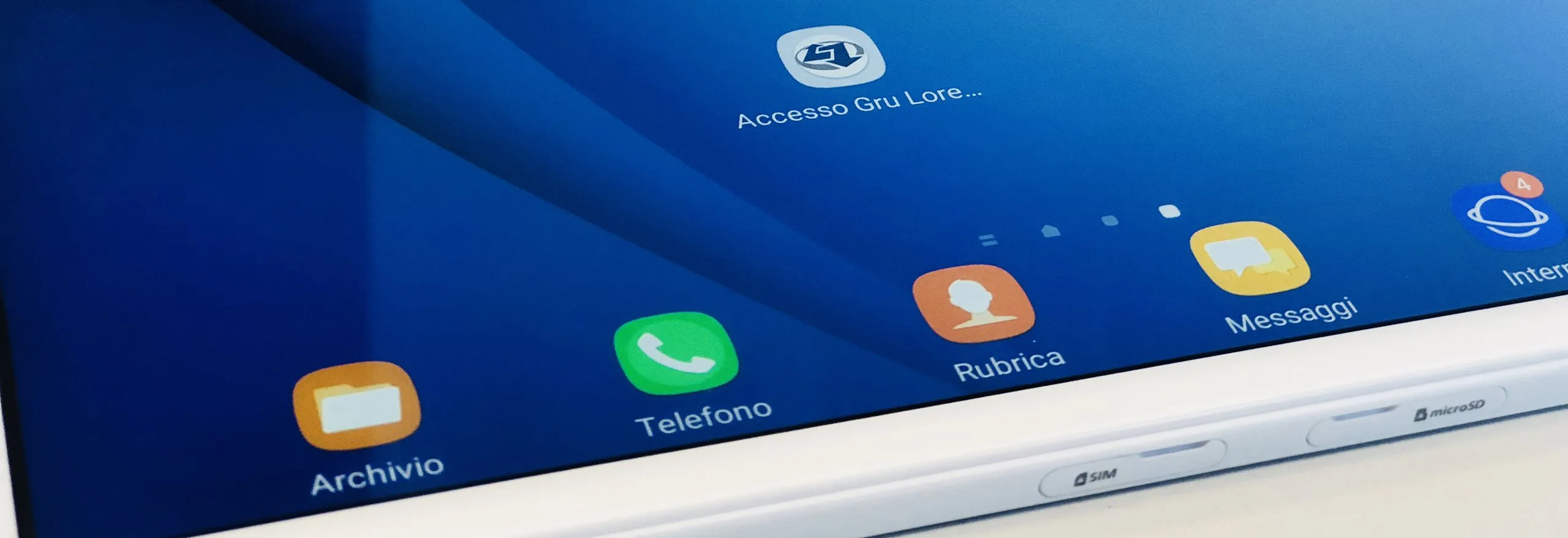
Information Technology
Lorenzini & C. makes continuous investments in new technologies. Year after year, improvements have been introduced regarding a wide range of sectors. The main areas of intervention have been: security, safety, maintenance of means of transport, productivity and privacy. These are all aspects on which the possibilities offered by information technology have marked a progress in terms of performance.
In the long list of proposable examples, special mention should be made of the devices aimed at ensuring the safety of workers, such as a system of anti-collision sensors and a camera system supporting the driving task, both of which installed on the RTG cranes operating in the terminal.
Moreover, in 2017, a positive assessment was given to the idea of providing a proper training to the in-house IT staff in order to plan and programme real proprietary software; this will be installed on all tablets that are used on the operational means and by yard and dock workers. This development will be extended to mobile phones as well, thus enabling many new features for all the employees of Lorenzini and not only. One of the running applications allows fault detection of the means of transport through pictures, vocal messages, order of priority and automatic sending to the maintenance department by email or SMS message.
The information system
It’s been years since the company has introduced an information system with a specific dedicated software for the integrated management of information, both for the operating cycle and for the administrative and accounting procedures.
A team of technicians monitors “the system” performance enhancement according to the new information requirements needed by the company itself and also by the customers by means of the most sophisticated instruments offered by the “information technology”.
The messages used by the Lorenzini Terminal are in the standard Un/Edifact format, and the data exchange takes place in accordance with the international standards which are based on the Directives submitted by the United Nations Economic Commission for Europe (UN/ECE).
The standard messages managed by our terminal are the following:
Vessel operation: BAPLIE and COARRI
Terminal operation: CODECO
Since 2011, Lorenzini & C. has been equipped with a management programme which was developed on several modules and provided by the Dutch company COPAS. STEP supports many activities performed inside a modern container terminal, and is updated year after year with more new features. It is a product which is used by several Italian and foreign companies such as Roma Terminal Container, Terminal San Giorgio, Europa Servizi Terminalistici, Terminal Intermodale Nola and others.
The modules used by Lorenzini & C. allow the management of the terminal operativity and also the continuous inbound and outbound traceability of the container irrespective of the goods mode of transport, be it vessel, train or lorry.
eTerminal is a web interface through which it is possible to access the container tracking so as to verify the progress of operations. It is a service offered to the players revolving around the freight traffic, whether they are inspection bodies or agencies/customers. The service is accessible by using a username and a password which are customized for each user.
Through “Yard e Vessel” the in-house personnel are able to exploit the potentials offered by STEP to plan and manage the yards and the loading/unloading operations of vessels and trains. They are modules provided with a graphic design that facilitates the management of the various lots subdividing a yard or the vessel’s hold.
RFNET is, instead, an ad hoc module available to the operating personnel on operational vehicles (cranes, Reach Stacker, RTG) and provides the list of operations to be performed on containers (movements, deliveries, unloading), the management of Customs inspections and much more. It is installed on several devices, among which are palmtops used by operators to identify the type and number of seal on every container by transmission to the internal database. It is also possible to obtain printouts highlighting differences arising when matching the seals received via the manifest with those identified in the yard.
EDIStep enables the terminal to be connected in real time to the various partners through the receiving and sending of EDIFACT files containing information such as gate in / gate out movements, loading and unloading data of vessels, ship planning, data delivery orders and bookings.
Vessel planning Step is also integrated with TPCS system (Tuscan Port Community System), a feature that allows the reception of customs data pertaining to containers and other types of various goods. As regards the export goods, the identified seals are transmitted to TPCS, which will later be used by the forwarding agents to generate the manifests of the outbound goods.
Billing is a feature which permits the automatic generation of invoices starting from the movement data recordings performed in the terminal.
The utilization of an omni-comprehensive management programme is by now a solution which has become compulsory within the port context, given the ongoing evolution of operations and the variety of aspects to be taken into account. But an element of control and security is also present: through STEP it is also possible to extrapolate every single data received and to examine their regularity, also allowing report printouts if requested by inspection bodies such as customs department.